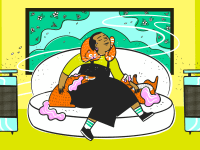Can you clean HEPA filters or skip changes to save cash?
What you need to know about air purifier filter replacements
Products are chosen independently by our editors. Purchases made through our links may earn us a commission.
Air purifiers are one of the best ways to improve indoor air quality, but many have filters that need replacing several times to work properly—and those costs can add up quickly. Depending on the type of filter, it can remove particles like smoke and pollen or chemicals like formaldehyde. Generally, the more efficient a filter is, the more expensive it is. That's why we include the cost of replacement filters in our air purifier guide.
If you've ever wondered how to clean air purifier filters and whether you can wash HEPA filters to give them new life, you've come to the right place. Our team of experts examined potential ways to save on filter replacement costs while maintaining pristine indoor air. From vacuuming filters to replacing them, here's what we found.
Our filter tests
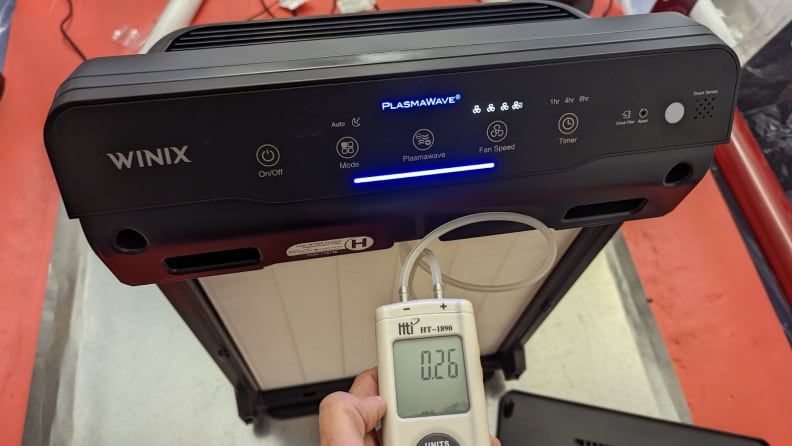
A fully functional air purifier should be able to eliminate smoke, dust, and other irritants.
We tested filters with a controlled amount of smoke, dust particles, and VOCs (a type of chemicals that include formaldehyde and paint fumes), and measured how quickly the air was cleaned up.
We used a Winix 5500-2 air purifier for all our tests. The Winix is one of the best air purifiers we’ve tested, and has filters for both particle and chemical pollution.
We compared four sets of filters:
- Old filters at the end of their recommended lifespan
- New manufacturer recommended filters
- New and cheaper filters from an alternative supplier
- Old filters we’d attempted to clean
On top of our usual pollution removal tests, we measured the change in air pressure across the filters. The size of the pressure change shows how much a filter resists air flow. High resistance shows a filter is too clogged to work efficiently, low resistance suggests a filter isn’t up to the task of stopping the tiniest particles.
Our data helps us figure out the answers to important questions like whether old filters really need replacing, whether you can cut costs with cheap filters, and if you can clean old filters rather than replace them.
For these we focused on the most expensive filter type, HEPA (High Efficiency Particultate Air) filters.
What is a HEPA filter?
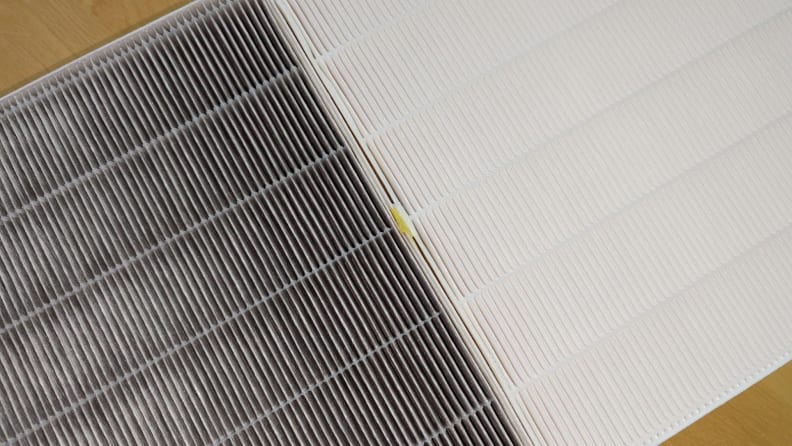
HEPA filters can detect and trap large particles in the air.
Most of the air purifiers we test at Reviewed have HEPA filters, an increasingly common feature in the most popular air purifiers. These are tested to a known standard, and the best HEPA filters are rated on how well they stop 0.3 micron particles.
Compared to this tiny size, pollen grains are huge, at 15 to 200 microns. HEPA filters can stop larger particles easily, but also clean up microscopic smoke particles from cooking or wildfires.
The best HEPA filters are expensive to make because they need an extremely fine mesh. Given their pricey nature, can you do anything to cut the costs HEPA air purification?
How often should you replace a HEPA filter?
Most air purifier filter replacement schedules cycle between three to 12 months. Our first set of tests used some 12 month old true HEPA filters from a well used Winix 5500-2 air purifier.
The used HEPA filter looked pretty filthy. While you might balk at the dirt, it’s actually a good thing because it means the air purifier is working just as it should. But did the dirt limit its performance?
The results and our conclusion
New, manufacturer recommended filters are 5% better at trapping particles than used filters. As well, old filters have an almost 50% higher resistance than new filters.
While the 5% performance drop doesn’t sound too bad, the high resistance indicates clogging of the old filter. In a larger space, like your living room, an air purifier will struggle to move enough air through an older filter to keep the air particle free. This will, in effect, reduce the CADR rating of your purifier, a measure of air cleaner efficiency.
To maintain top performance, replace dirty air purifier filters on schedule.
How to clean air purifier filters yourself—and can you?
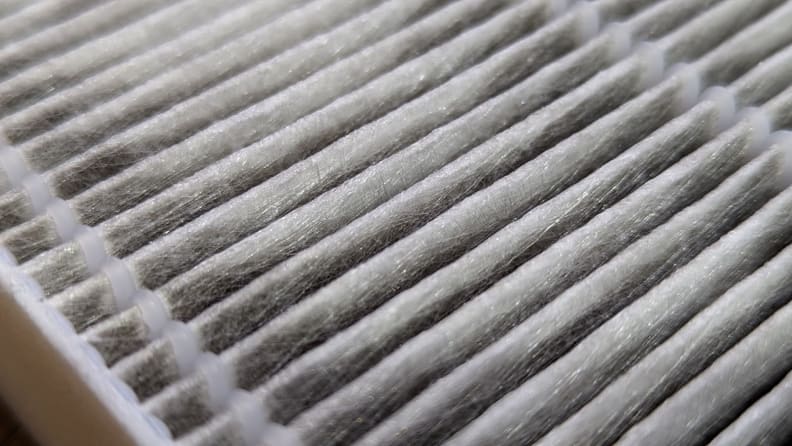
HEPA filters are delicate, so treat them with care when you clean them.
A HEPA filter traps particles. It seems like you could restore and reuse the filtration system if you remove those particles. We decided to give it a try.
HEPA disposable filters are delicate by nature. With this in mind, we took a cautious approach.
First, we used a handheld vacuum. This made no noticeable difference to the visible levels of dust and debris, so we stepped up to a more powerful cordless vac, but again, no progress.
The results and our conclusion
The vacuuming reduced filtering performance by 5%. After cleaning, the resistance across the filter didn’t change.
Based on this data, we conclude that you can’t clean a HEPA filter with a vacuum, in fact you might damage it in the process. Once it’s clogged and dirty, you’ll have to replace it.
Can you wash a HEPA filter?
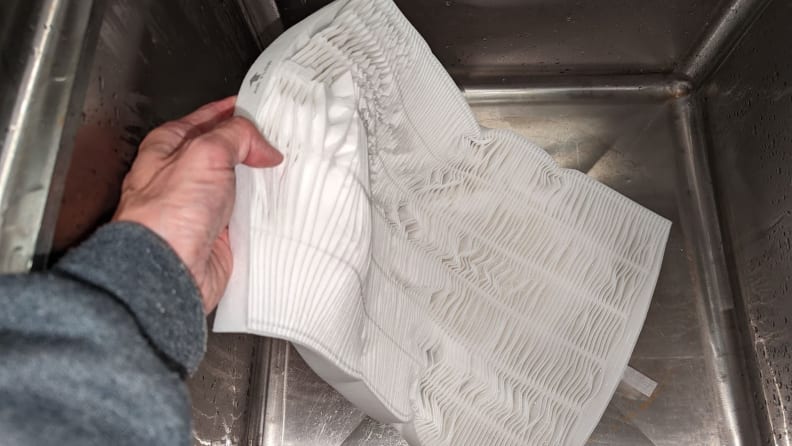
Be sure to double check if your HEPA filter can be hand-washed before potential damage is caused.
If vacuuming doesn’t work, can you do something more drastic to clean that filter? We tried giving the HEPA air purifier filter replacement a bath.
HEPA filters have a delicate, paper-like structure based on many fine fibers. The sad end result was a pile of mush, still apparently full of trapped dirt.
The results and our conclusion
Washing makes a standard HEPA filter unusable, so don’t wash a filter unless the manufacturer recommends it!
Some filter types are washable. For example the activated carbon filter and prefilter in our Winix can both be rinsed with water to remove dust and chemicals, and reinstalled once completely dry. We’re not aware of a true HEPA-rated filter that can be washed in a similar way.
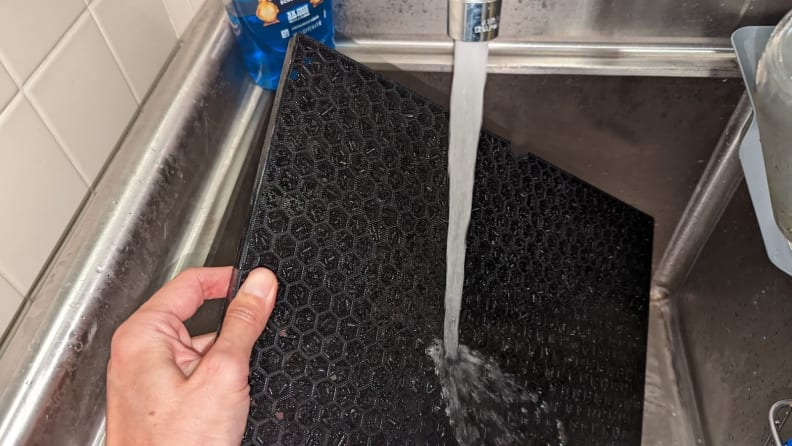
If you go the low cost route when choosing a new filter, you might be sacrificing on performance.
Can you cut costs when buying a HEPA filter?
All air purifier manufacturers recommend their own, branded filter replacements. For nearly every filter, there’s a low-cost alternative available from other suppliers. With budgets being tight, can you get similar performance from a low-cost filter?
The results and our conclusion
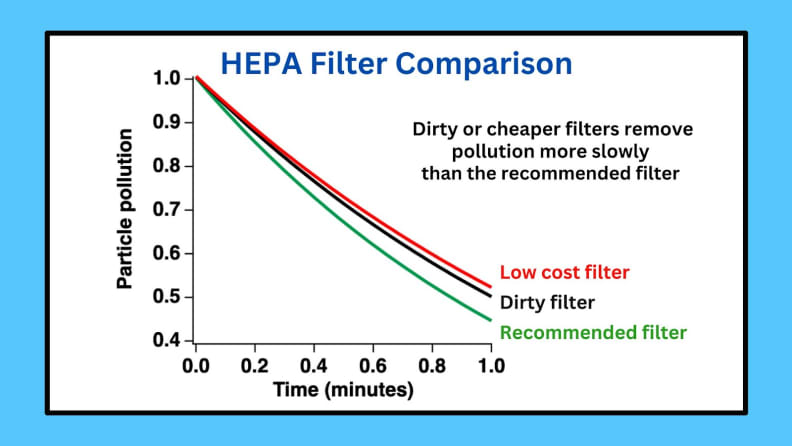
A low cost filter underperformed, as we anticipated.
The low-cost filter performed about 10% less well at stopping particles than the manufacturer’s recommended choice, and it had a 22% lower resistance than the recommended filter.
This low resistance suggests the cheaper filter structure is less finely woven than the recommended brand. At least for the Winix, cutting corners on cost means sacrificing some filtering performance.
How to clean and care for your air purifier
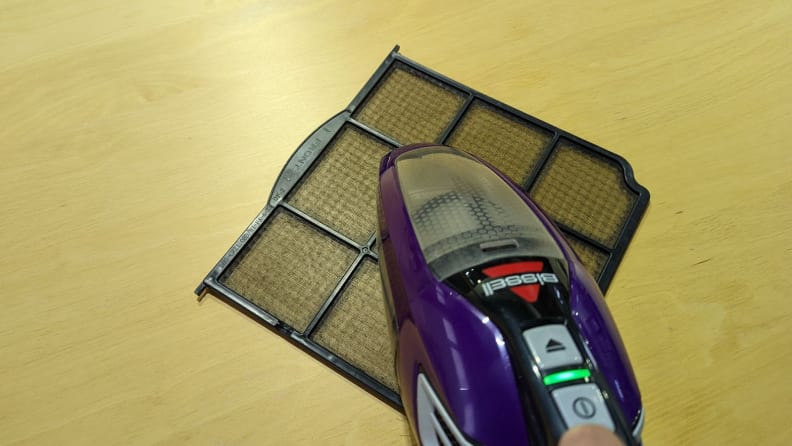
Performing regular maintenance on your air purifier inlets will lead to the best results.
If you want optimum performance from your air purifier, then it’s difficult to sidestep filter replacement schedules and costs.
Luckily there are some things you can do to keep your air purifier running as efficiently as possible.
- Regularly clean the air inlets and purifier housing to remove dust buildups.
- If your air purifier has a pre filter, clean it at least once a month.
- Clean washable filter stages on the recommended schedule.
- Change filters on the recommended schedule.
- If you’re concerned about small particle pollution, like smoke, get the manufacturer’s recommended product.
Can these hacks save you money on an air purifier filter replacement?
Dirty filters don’t perform as well as clean filters. Unfortunately, once a standard HEPA filter gets dirty, cleaning isn’t an option, so there’s no escaping filter replacement. In the world of HEPA filters there are no permanent filters.
If a manufacturer recommends a 12 month replacement schedule that’s based on assumptions about how often you use your purifier, and how polluted your air is. The filter won’t self-destruct after 12 months!
So use your own judgment, if the filter looks clogged with dirt, replace it, if it still looks pretty clean and is working properly, wait a while and save some cash.
The cheaper version of a HEPA filter we tested didn’t perform as well as the more expensive manufacturer’s recommended product.
That doesn’t mean low cost HEPA filters should be avoided, but your decision to use the bargain option depends on the type of particle pollution you’re most concerned about.
Pollen grains are relatively large, so if you have a seasonal allergy a cheaper filter could work just fine for you.
Smaller particles like pet dander, smoke, and virus carrying aerosols call for a higher performance filter. If you have pet allergies, are concerned about wildfire or cigarette smoke, or airborne viruses, then a higher-end HEPA filter is worth the extra expense.


